Last Updated on November 13, 2020
Today I want to show you the best pasture pigs rotational grazing paddock design and how you can raise pigs on pasture in a way that stewards the land well and makes your life much easier.
Introduction to My Pasture Pigs Rotational Grazing Paddock Design
On our farm, I like to utilize pasture-based systems for our animals that steward the land well and make my life easier. And that’s exactly what I did when I designed this pastured pigs rotational grazing system.
I wanted a system that didn’t require a lot of additional work once I implemented it. I didn’t want moving my pigs to be a chore but rather as easy as opening one gate and closing another.
I also wanted a system that would allow my pigs to forage in an area and then I could allow that area to rest and recover once they’ve exhausted it. This is especially important with pigs because they like to root around and can take pasture all the way down to dirt if you let them.
I also didn’t want to have to move their waterers, feeders, and shelter every time I moved my pigs to a new paddock since that can be one of the hardest parts of rotating pigs on pasture.
With all of that in mind, I decided to create a pastured pigs rotational grazing paddock design using a hub and spoke layout. I used Google Earth to design it and this is what I came up with.

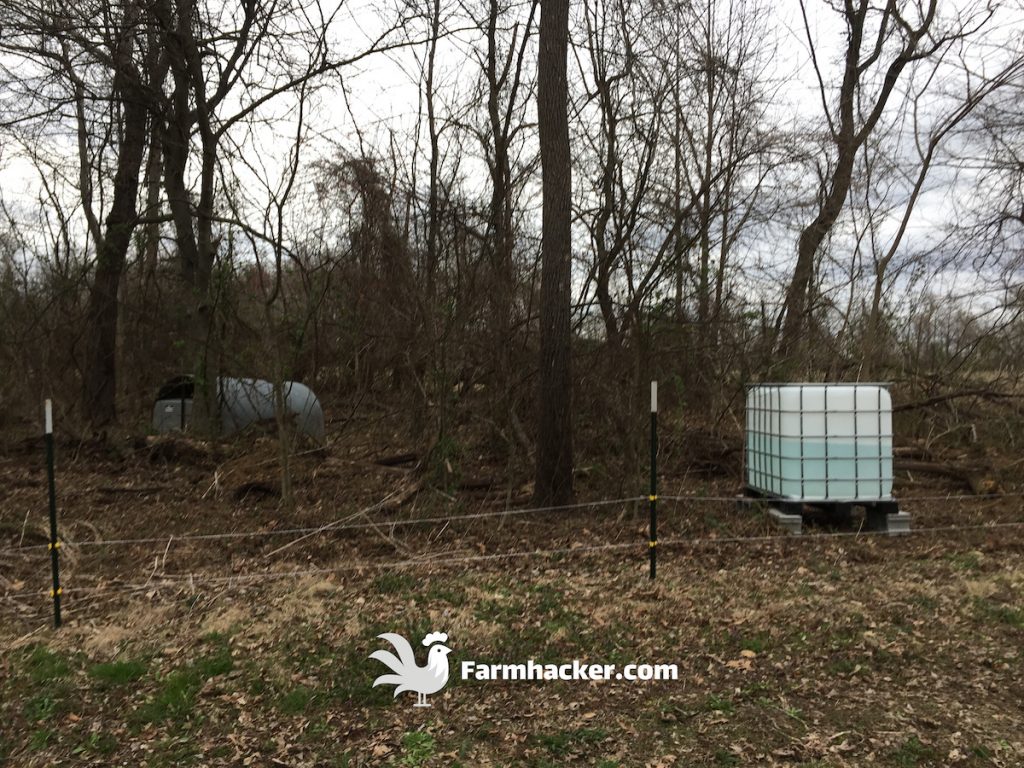
Home Base (Hub)
Imagine a wagon wheel. On a wagon wheel you have a hub and then you have spokes coming off of the hub. In this case, the hub is what I like to call home base and the spokes would be the paddocks.
My pigs always have access to this home base area. In it they have their pig waterer, shelter, and pig feeder when I supplement them with feed. I didn’t want to have to move each of those things every time the pigs were moved to a new paddock so I created this home base area for them.
Again, the pigs always have access to this area and can go in and out of it as they please no matter which paddock they currently have access to. Using the hub and spoke system makes this very easy.
The area where I decided to put their home base also contains a lot of trees for shade. They even have mud pits in it. It’s really like hog heaven. They have almost everything they need. But what they don’t have in that area is pasture.
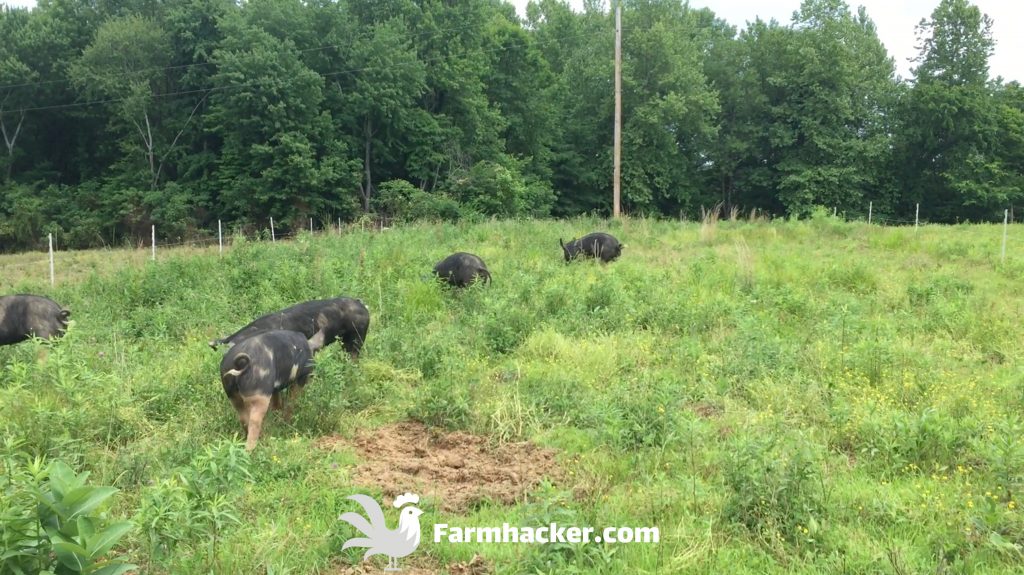
Paddocks (Spokes)
Going back to the wagon wheel idea, for the spokes, I created one acre paddocks that extend out from the home base hub.
I laid them out using Google Earth so I could measure the size of each paddock. After that, I printed it out and roughly laid them out in my pasture based on the overhead view.
When setting up the paddocks, I utilized step-in posts and electric polywire which is very easy to set up. Polywire will roll up very easily, you can cut it, and you can tie it together. It’s a very quick and easy way to create paddocks.
My pigs are trained to electric so I only had to use two strands, one near the bottom of the posts where their snouts would be when they are foraging and another strand around where their eye level would be.
I do leave these paddocks up all the time but if I ever need to take them down or move the posts, I can do so very easily as well.
How do you move your pigs?
The awesome thing about this pastured pigs rotational grazing paddock design is how simple and easy it is to manage it. When I want to let the pigs have access to a paddock, I just open up the polywire and let them go in and out from home base to the paddock as they please.
When they’ve exhausted a paddock and are ready for the next paddock, I just close it up and open the next one. The best time to do this is when they go into home base to rest for the evening or when I’ve given them some feed.
How often do you move your pigs?
As far as how often you move your pigs from one paddock to another, it really depends on how many hogs you have. The more hogs you have then the more quickly you’ll have to move them. Once they eat a paddock down, you need to be ready to move them to the next paddock.
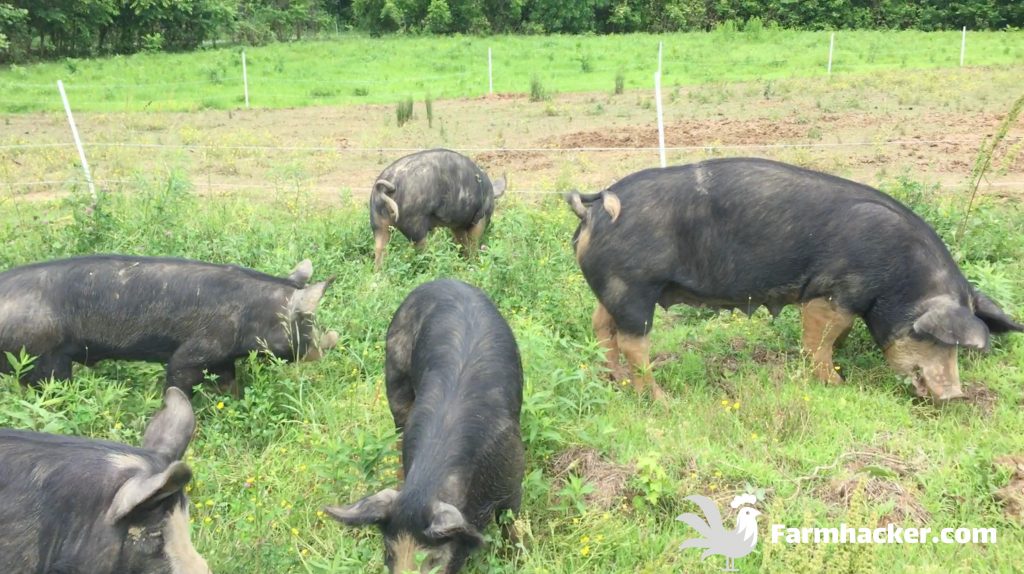
In this picture, the first paddock (top of the picture) is where they were about a three weeks before this picture was taken and they ate it all the way down. They fertilized it, they tilled up the soil, and that paddock is now getting a rest. Look at how green it is now and how nicely it is recovering.
After that, they were given access to the second paddock (middle paddock in the picture). As you can see, there isn’t much pasture left on it. They ate it down to the dirt. I closed that one off to give it a rest and moved them the third paddock which they are now on in the picture above
Once they’re done there, I’ll open the next paddock up (not in the picture) and close this one off. They will continue this process until they can get all the way around this field. After that, they will repeat the cycle and start over on the first paddock again.
With the way that my land is set up, each paddock actually goes into the woods a bit. This allows them to forage in the woods as well as feed off the pasture.
Can you use pigs to improve your pastures?
Two years ago before we bought this farm, the pastures were row cropped and were in very bad shape. I’m now utilizing the pigs to help me recover this pasture.
Last year, before I added the pigs, I gave the pasture a rest. I let it set for the entire year and I just mowed it. I wanted to let it recover some before I put hogs on it. And now the hogs are here and it’s in much better shape.
I still have some areas that the hogs have never been on and it’s still rough. In those areas, there’s still a lot of Johnson Grass, it’s patchy, you can still find some corn cobs on the ground where it was row cropped two years ago. But where the hogs have already been, it is recovering very nicely.
The pigs will eat it down to to the dirt. They’ll also root around and that’s okay. It’s not going to be like a cow grazing and you just have to accept that.
I decided to reseed each paddock after they went through them the first time. I broadcasted some Fescue, Orchard Grass, Clover, and Timothy and it’s in much better shape now.
And the hogs keep putting that back into the soil. As they work through the paddocks, they’re tilling it up and mixing seeds around. They’re doing a really good job.
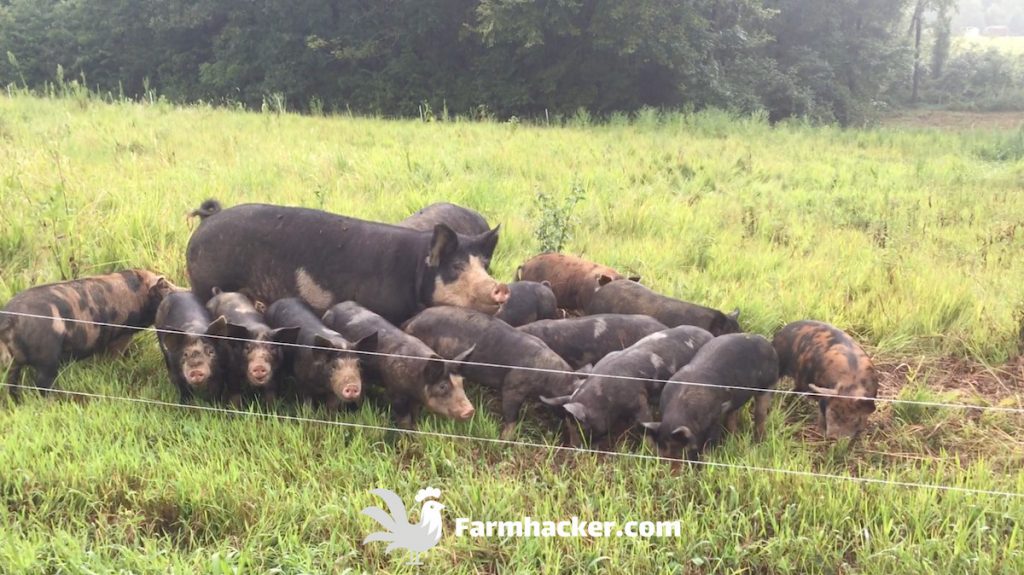
What pig breeds are good on pasture?
I’ve had the benefit of trying several different pig breeds on pasture. I’ve tried Kunekune / Guinea Hog crosses on pasture and they did really well. In the summer, I didn’t even have to supplement them with feed because they would gain weight from pasture alone.
However, they grow slow and they are about half the size of a full-size pig so you have to raise more to get the same amount of pork. But the pork still tastes just as good.
I have also raised Berkshires, Large Blacks, Hampshires, and Blue Butts on pasture. They will thrive on pasture but they have to be supplemented with additional feed sources because pasture alone will not provide them with enough protein, or more specifically, lysine. If you don’t supplement them with feed sources that contain these additional nutrients, they will stall out on pasture.
My goal is to feed my pigs 80% of their diet from pasture and the other 20% from supplementing them with feed. The way that I’m doing this is through non-GMO pig feed.
There are other people that do this utilizing things like hazelnuts, whey, milk, or other feed sources. I created an organic pig feed system using vegetables and it has also worked well.

What other animals do you rotate through your paddocks?
I also raise pastured chickens for eggs and I am rotating them through these paddocks as well. I do this by utilizing a mobile chicken coop on a wagon frame surrounded by poultry netting.
I rotate them through the paddocks after my pigs have gone through. They help me take care of parasites and they fertilizing the the land as well. This helps to create better pastures and ultimately better soil.
I also keep Great Pyrenees livestock guardian dogs with my chickens to protect them. Since having them, I’ve never lost a chicken. The dogs do a great job taking care of them.
I have also used this system to rotate goats through my paddocks. In fact, I’ve actually cograzed my goats with my pigs. The goats are great at eating things that the pigs might not like.
I would not put baby or young goats in with the pigs. Pigs are definitely rougher than goats and might injure them. My full grown goats, however, can hold their own. As long as your pigs aren’t too rough on your goats, you can consider this too.
360 Video on My Pastured Pigs Rotational Grazing System
Conclusion
I hope this guide was helpful. My hope is that I’ve given you enough information to help you design your own pastured pigs rotational grazing system. If you have any questions, please post them in the comments below.

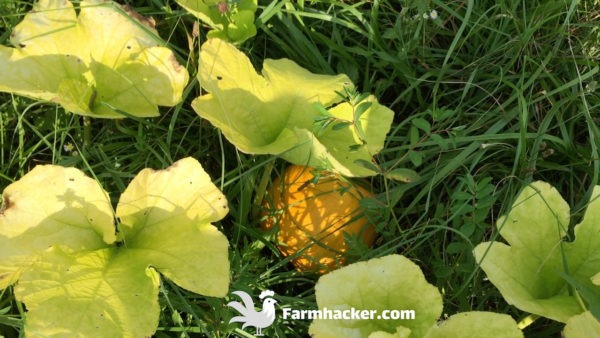
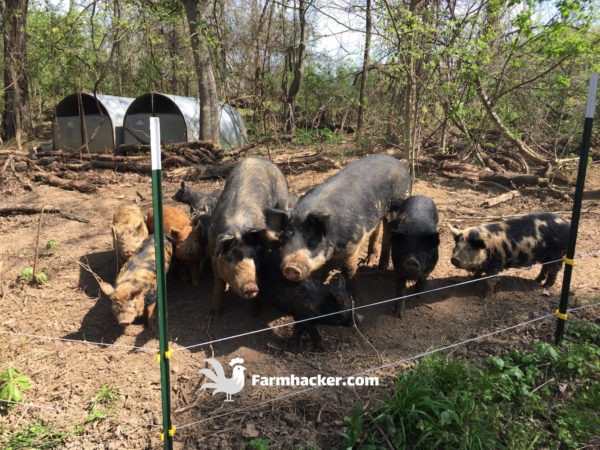
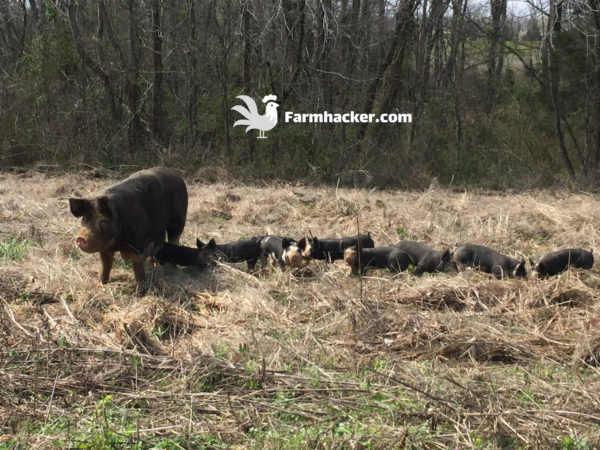

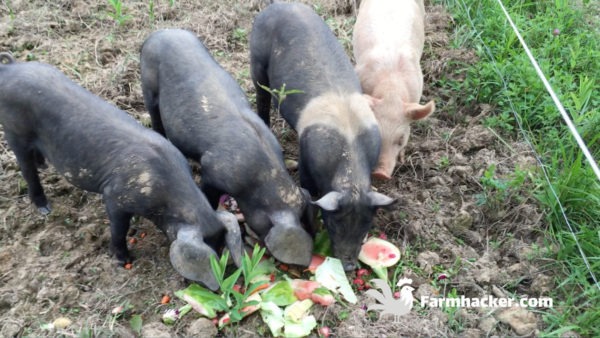
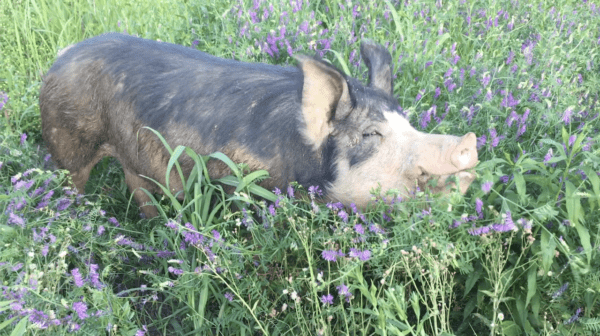
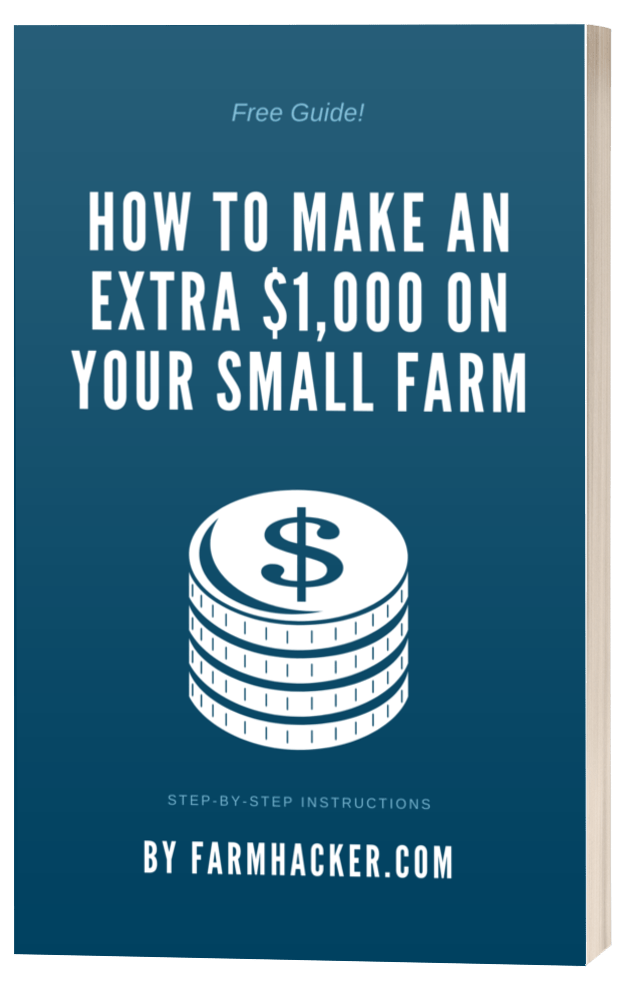

Can you guide and mentor me on how I can do a pig pasture farming on 20 acres of land?
Really great stuff! Thank you!
Hi. Thanks for posting this information. We are considering how to move forward (or not) with raising pastured pigs. I have a question for you about the home base area. How do you keep that area from being completely destroyed? How do you maintain it so that it is not a big mud area in winter? I suppose if it is small enough with both their shelter and food in it the pigs would be unlikely to leave waste there, but the constant traffic alone would tramp down to dirt. Do you cover it with anything – gravel or wood chips?
Also, do you have a breeding area set up or one of your pens fenced with hog panels to keep piglets in? Trying to work out where and how we can allow for breeding while also doing rotations.
Thanks again for posting the info and the picture of your paddocks!
Hi Andrea,
There is no way to prevent them from rooting up and making mud in parts of the home base area unless you raise a smaller breed that is less likely to do that. It’s a small price to pay to not have to move their shelter, feeder, and waterer every time you move them to a new paddock. What tends to happen though is the pigs are less interested in doing that in the home base area and more interested in doing that in the new paddocks because they are fresh and have new things that interest the pigs. I suppose you could cover it with wood chips or something if you wanted to. I’ve never done that.
When I had piglets I put them and the mom in a completely separate paddock that wasn’t attached to this system. I didn’t use hog panels to keep the piglets in because the piglets always want to be with mom. They may run under the polywire but they always come back. Eventually they grow tall enough that they will get a shock if they do that so they learn no to do that anymore.
Hope this helps!
Great information! Thanks for taking the time to put it out there. Just wondering how many pigs you are grazing in this set up ? Cheers.
Hi Bruny Farmer,
With this set up, I would typically move about 15 hogs (mixture of sizes including some small breeds like KuneKunes and piglets) from one paddock to another every week or so.
Good evening! Do you use panels or stronger fencing for the perimeter of the paddocks and then use the poly wire on the inside to break up the paddocks? Our Berkshires are very destructive and I’m afraid they won’t respect the poly wire boundaries…
Hi Kristy! I use polywire for the perimeter as well. If your pigs are happy, they will stay in. And because of that, I’ve never had an issue with mine escaping. Let me know if you have any other questions.